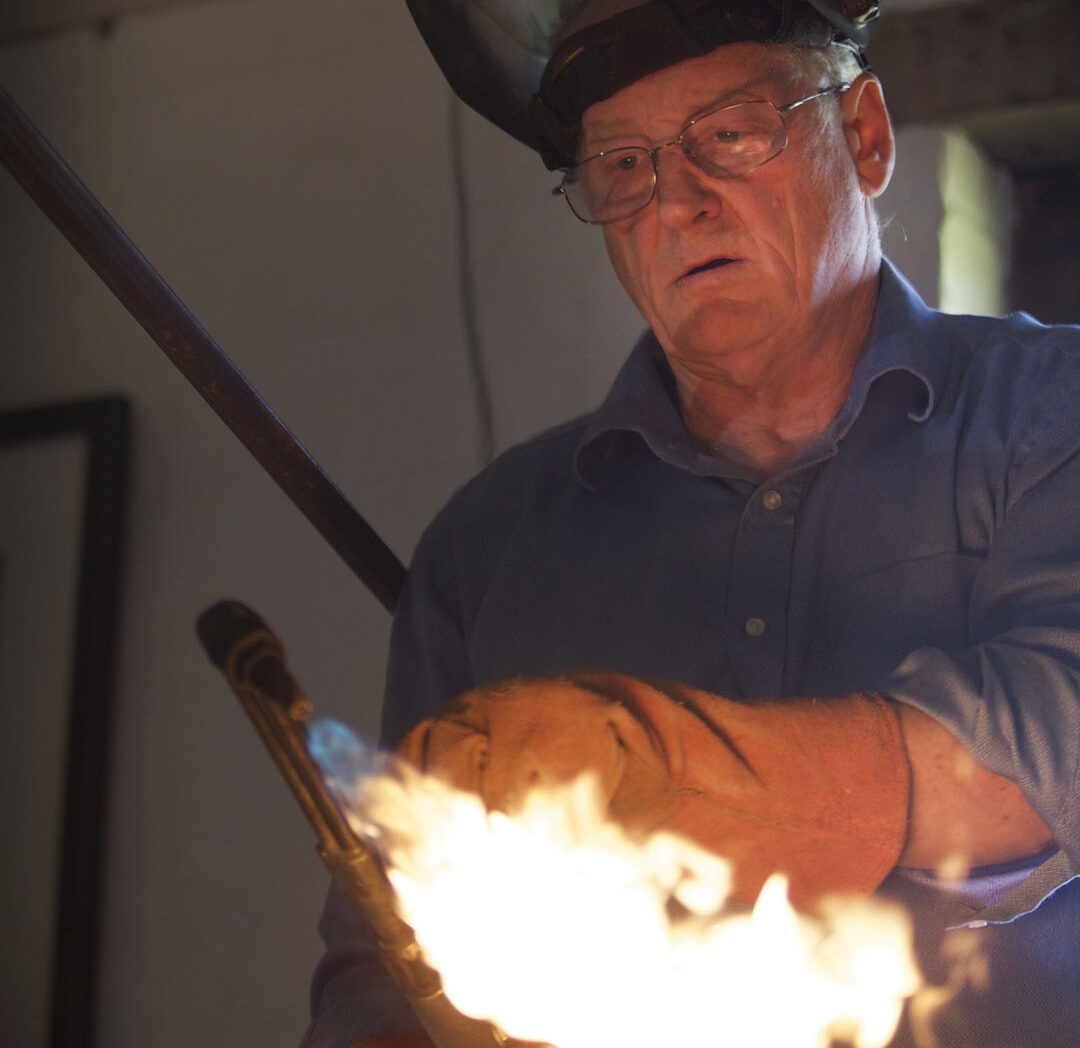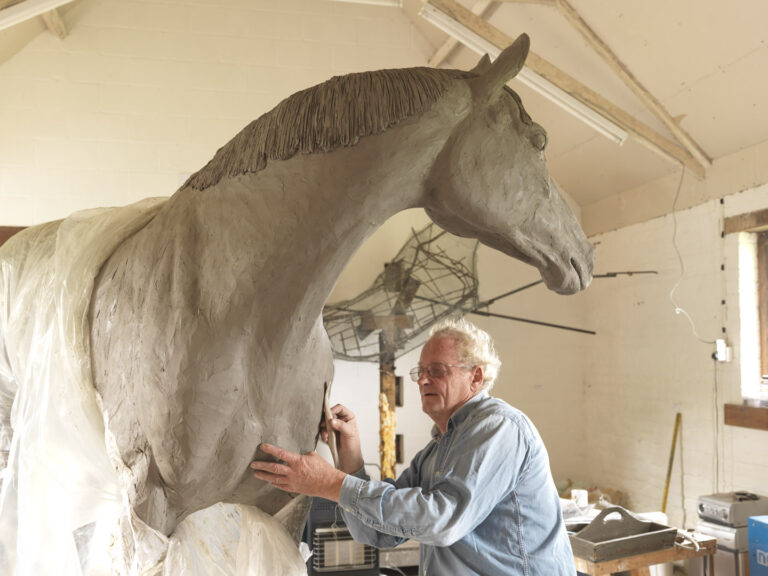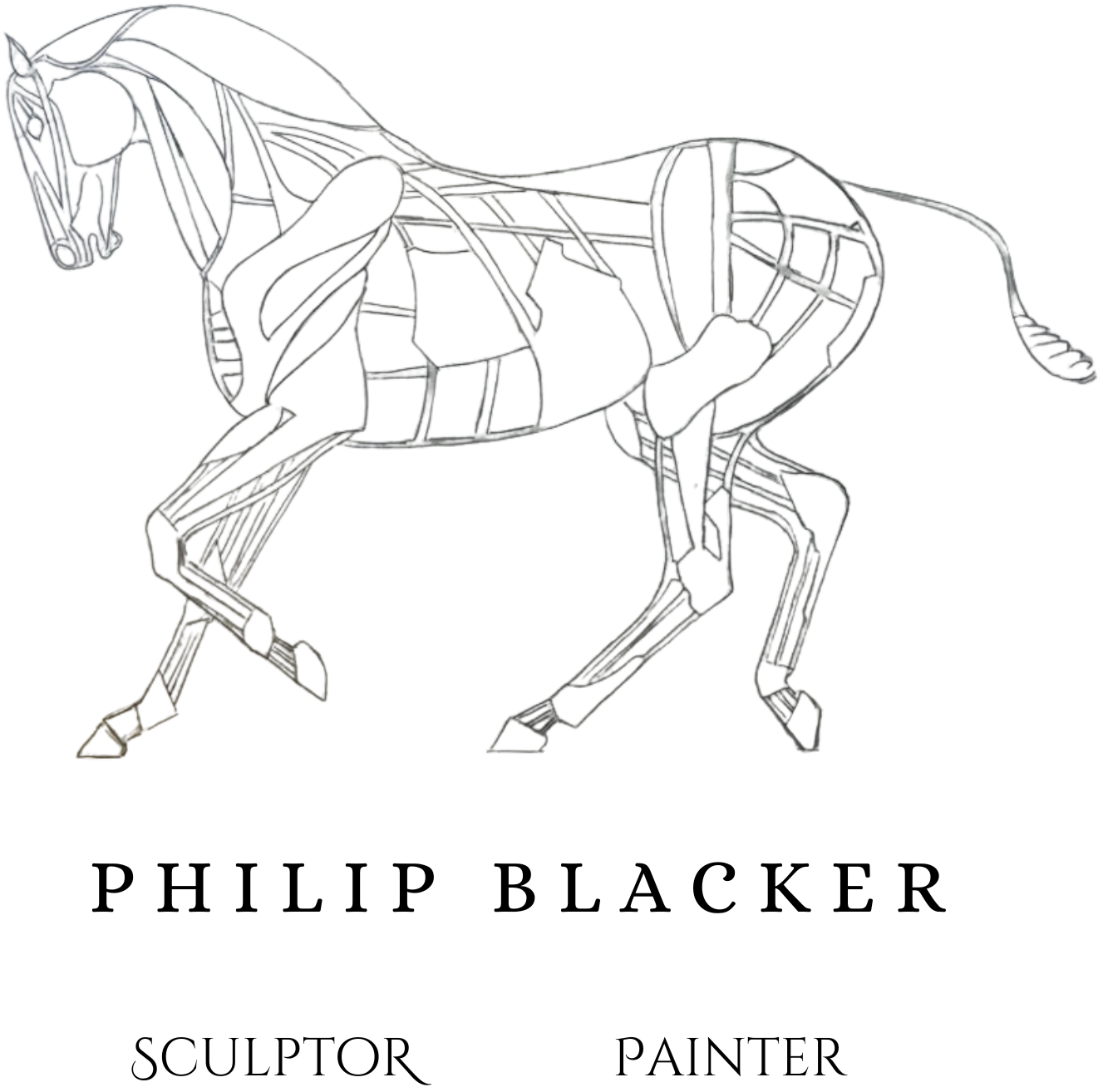About
Philip Blacker was born in 1949 and was educated in Dorset. On leaving school he became a steeplechase jockey and rode professionally for 13 years, during which he rode 340 winners. Philip rode several winners at the Cheltenham festival was placed several times in the Grand National including finishing third behind Aldaniti in 1982.
It was during this time that Philip developed his latent enthusiasm for sculpture. Under the guidance of Margot Dent, a former pupil of John Skeaping, he devoted as much time to sculpture as he could spare from his riding, and his first three editions, all racing bronzes based on The Grand National, sold out quickly. In 1982 he retired from the saddle to concentrate full time on sculpture from his Oxfordshire studio.
Philip’s first one-man show was held at the Tryon Gallery, Cork St, London, in November 1983, and was hugely successful. Initially his work concentrated on capturing the authenticity and movement of horse racing subjects. Since his retirement from the saddle he has moved on to include a wider subject matter and to experiment with technique.
However, his ambition was to work on a grand scale and the opportunity came when he was commissioned to create a life-size sculpture of Red Rum for Aintree Racecourse.


Since the success of the Red Rum bronze, he has completed 26 further life-size or larger bronzes of horses, which now stand in Canada, Australia, France, Ireland, Barbados, Japan and the UK. In recent years, his life-size commissions have included sculptures of the triple Cheltenham Gold Cup winner, Best Mate, Persian Punch for Newmarket Racecourse, a dressage horse for the New Equestrian Centre in Penang, Malaysia, and an 18 foot high sculpture of a stallion for Saudi Arabia.
Philip’s large-scale non-equestrian subjects include a sculpture for Blythe shopping centre of a local legend, strong man Willie Carr. In addition to this he completed a 1.25 size bronze of the featherweight boxer Jim Driscoll for the Cardiff Bay Development Corporation in 1998.
Since that first exhibition, Philip has held five more one-man shows. In each he has demonstrated his increasing versatility, creating sculptures of the human form and animals, both wild and domestic. In all of these, his sculptures capture the essence of expression and suspended motion.



